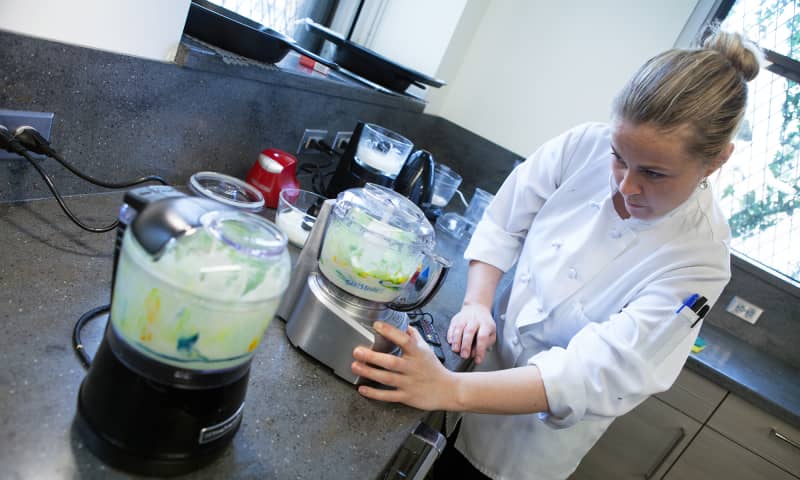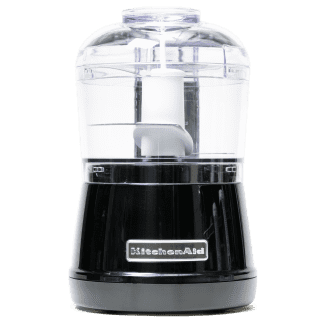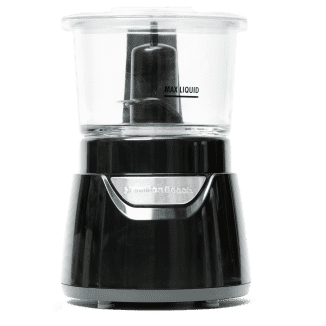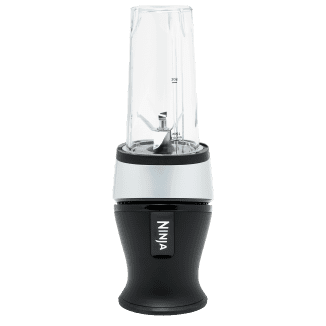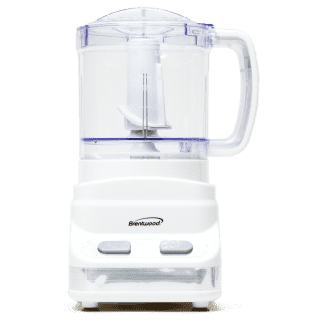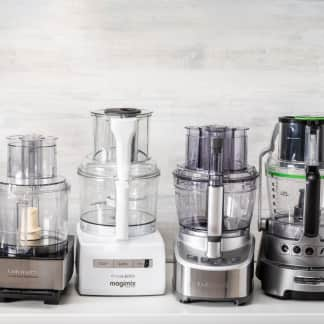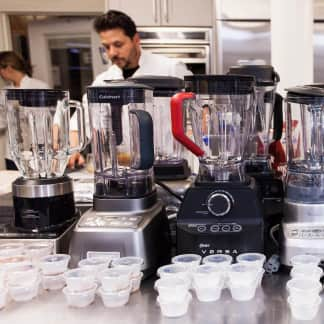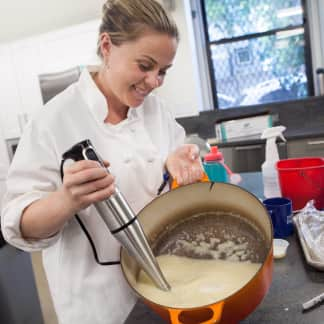Our favorite small food processor is the Cuisinart Elite Collection 4-Cup Chopper/Grinder. It has a sharp blade and responsive controls and is adept at handling tasks such as making dips and mincing vegetables. The KitchenAid 3.5 Cup Food Chopper is our Best Buy. It’s durable and works quickly without overprocessing.
5 Ingenious Ways to Use a Food Processor
Who knew your food processor was the key to great cocktails?Owning a good food processor is like having a little motorized sous chef living in your cabinet. We use ours regularly to grate cheese; grind bread crumbs; chop nuts; blend soups; prep vegetables; and mix doughs for pizza, bread, cookies, and pie.
While we consider ours indispensable, standard food processors tend to be big and pricey. Smaller processors are a good choice for budget- or space-conscious cooks or for those who want to dip a toe in the processor pond before shelling out nearly $200. We took a fresh look at the small food processor market to find the most versatile, efficient, and well-designed model. Options ran the gamut from chintzy choppers to miniature versions of full-size models from major brands. They ranged from 1.5 to 6 cups in capacity (compared to 11 to 16 cups for larger models), but we wanted something that could cut and blend. So we saved the small, basic choppers for later and zeroed in on 3- to 6-cup models.
As we soon learned, there are downsides to smaller processors. First, they can’t handle doughs well; their workbowls are too small and their motors too weak. Second, they’re not efficient for large-quantity prep—they don’t have grating or slicing blades, and their smaller workbowls maxed out at about 2 cups of vegetables. But a good small food processor can also excel at mayonnaises, dressings, dips, marinades, and sauces—projects that would otherwise require serious muscle or a food mill. They can also handle smaller-quantity mincing, grinding, and dicing. Overall, these compact appliances are ideal for those with limited counter or storage space who still want some of the efficiency and capabilities of a large-scale food processor.

We used a range of tests to evaluate how well the small food processors performed and how easy they were to use.
What to Look For
- 3.5- or 4-Cup Capacity: We liked models that were compact but still big enough to be useful for a range of tasks. The ideal capacity for small food processors was 3.5 to 4 cups, which was large enough to handle mincing vegetables, grating cheese, and making dips.
- Sharp, Straight Blades: We found that processors with sharp, straight blades made clean cuts when mincing or dicing food.
- Low Blade Clearance: We liked models with blades that sat closer to the base of the bowl, with just 3 to 4 millimeters of clearance. These were better at evenly processing food.
How to Make Vegetable Prep Easier with Your Food Processor
Take a break from practicing your knife skills and let your food processor do the work.- Good Power: Food processors require a certain amount of power in order to perform well. Models that were powerful enough to make smooth, fully emulsified sauces and dips received top marks.
- Responsive Controls: We also liked controls that worked quickly, stopping and starting immediately after we pressed the buttons so that we didn’t overprocess food.
- A Drizzle Basin: This is a reservoir in the lid of the food processor that has a small hole in it. We think these are essential for sauces and other condiments that require emulsification. The hole lets oil drip slowly into the mayonnaise or sauce base, allowing it to incorporate properly.
What to Avoid
- Models with Smaller Capacities: Models with capacities smaller than 3.5 cups were too small to allow us to make full recipe yields of sauces or to evenly chop nuts.
- Serrated Blades: Blades that were serrated cut food roughly and unevenly.
- Big Gaps Between Blade and Bowl: Blades that sat too high up from the bottom of the bowl (above 4 millimeters) couldn’t reach all of the food and often underprocessed it as a result. Egg yolks, whole garlic cloves, almonds, and pine nuts remained stranded under their blades.
- Underpowered and Too-Fast Motors: Models that ran too quickly overprocessed food and were hard to control. Processors that didn't have enough oomph made chunky hummus and pesto that were deemed “rustic” by tasters.
